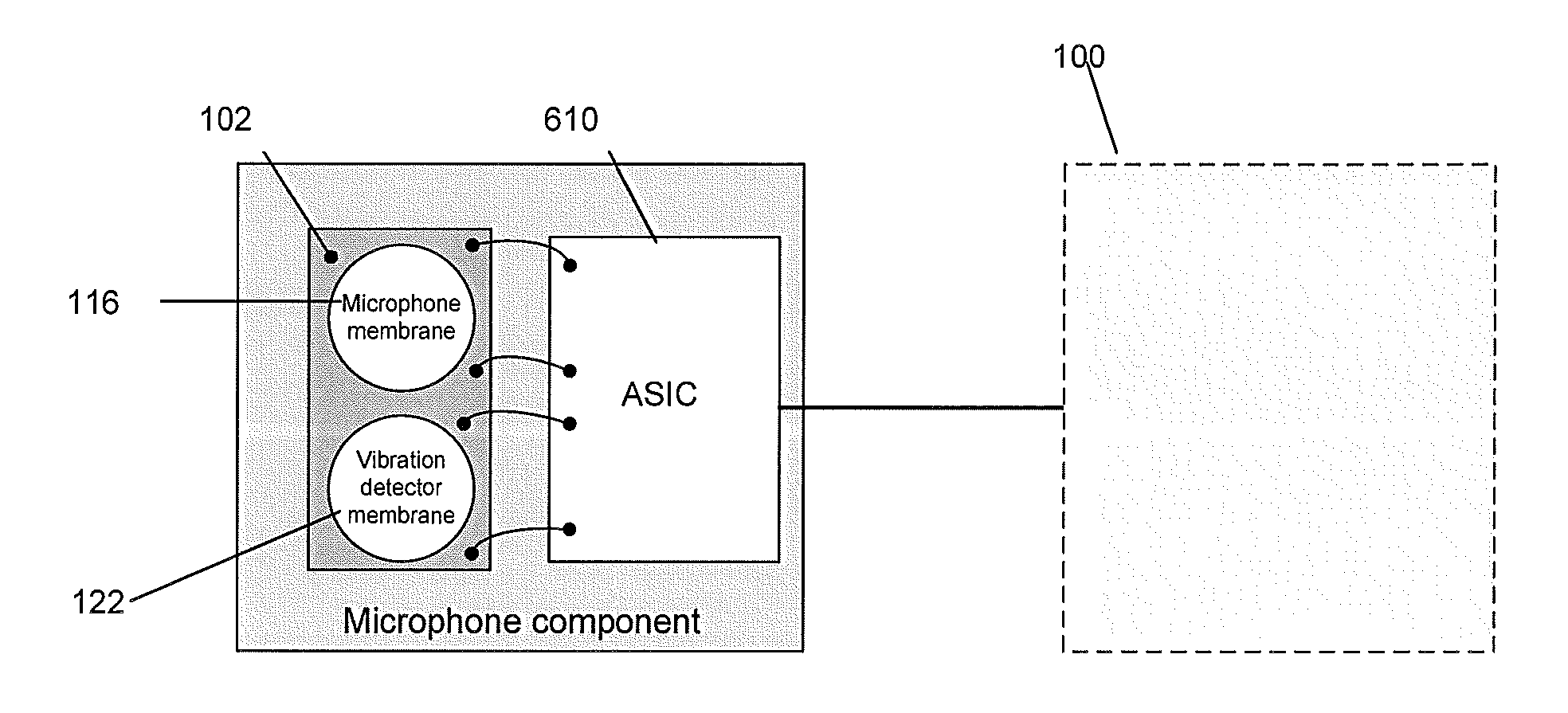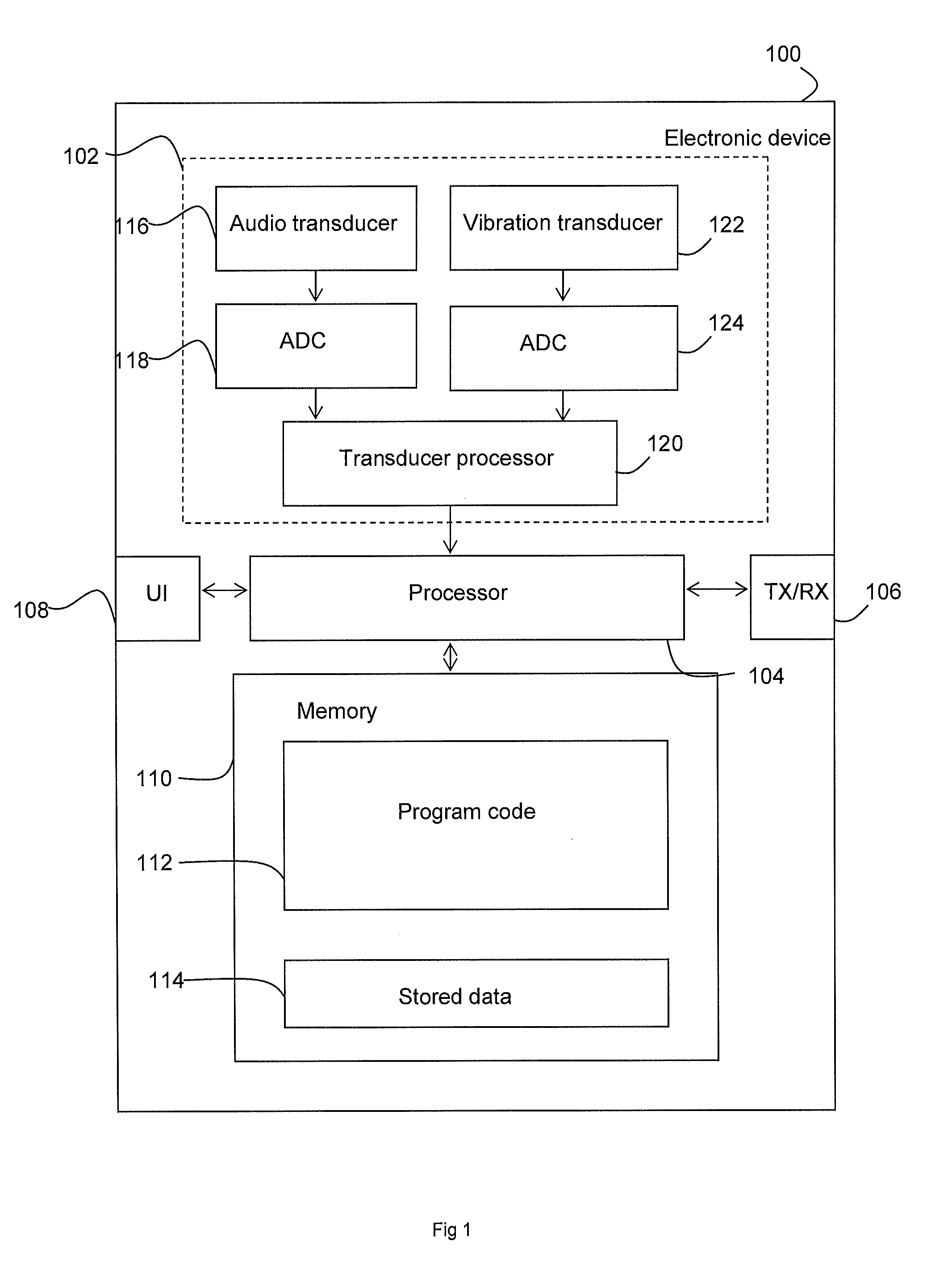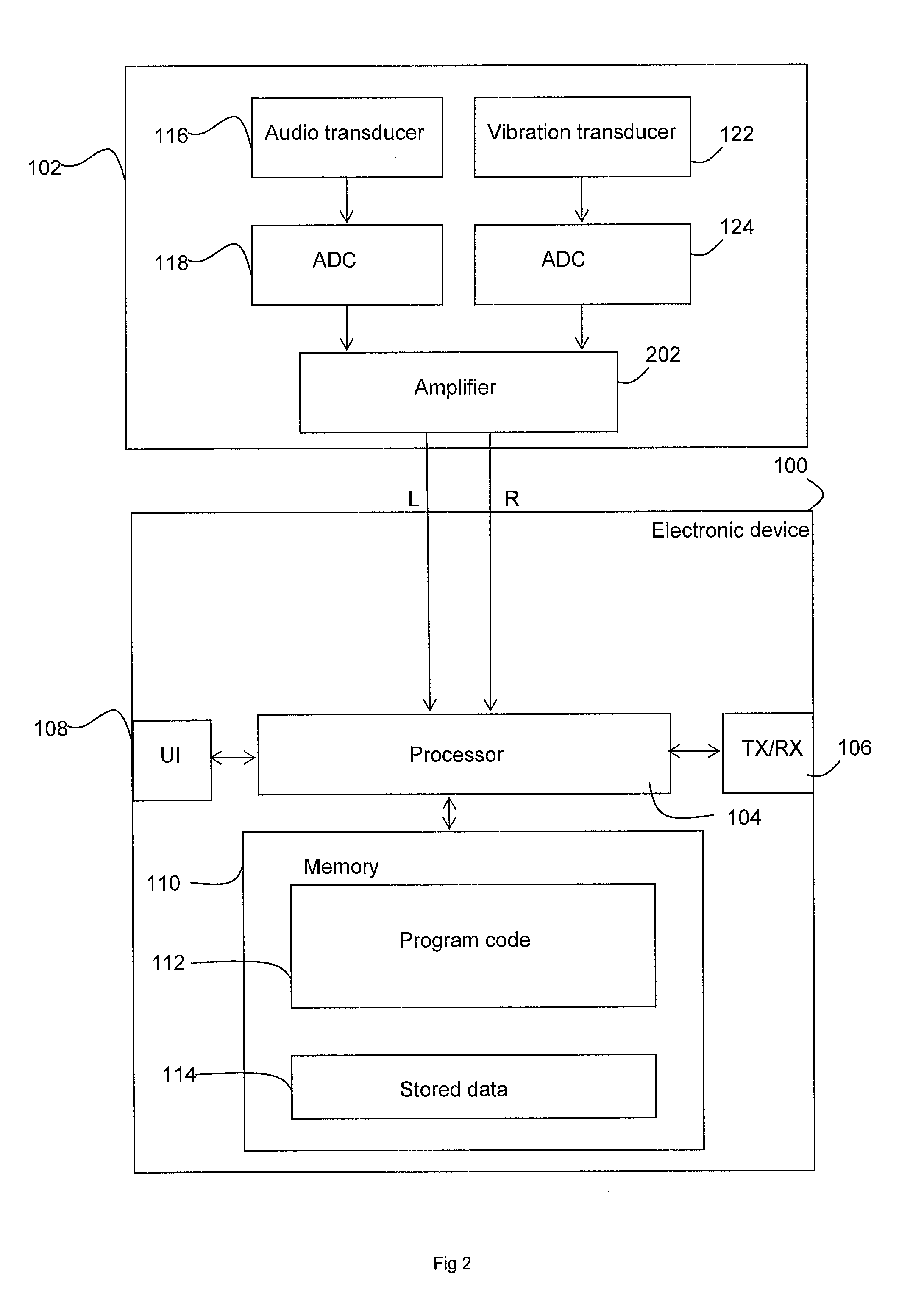Microphone apparatus and method for removing unwanted sounds
a microphone and unwanted sound technology, applied in the direction of transducer circuits, transducer casings/cabinets/supports, speech analysis, etc., can solve the problems of mechanical vibration, movement of the membrane, and other vibrations of the electronic device on the membrane of the microphone componen
- Summary
- Abstract
- Description
- Claims
- Application Information
AI Technical Summary
Benefits of technology
Problems solved by technology
Method used
Image
Examples
Embodiment Construction
[0042]The following describes apparatus and methods for reducing the noise in an audio signal from mechanical vibrations experienced by an electronic device.
[0043]In this regard reference is made to FIG. 1 which discloses a schematic block diagram of an exemplary electronic device 100 or apparatus. The electronic device 100 is configured to reduce mechanical vibrations captured in an audio signal according to some embodiments.
[0044]The electronic device 100 is in some embodiments a mobile terminal, a mobile phone or user equipment for operation in a wireless communication system. In other embodiments, the electronic device is a digital camera, a camcorder, a portable dictation device, personal digital assistant (PDA), laptop or any other electronic device suitable for capturing sound.
[0045]The electronic device 100 comprises an audio module 102 which is linked to a processor 104. The processor 104 is linked to a transceiver (TX / RX) 106, to a user interface (UI) 108 and to memory 110...
PUM
 Login to View More
Login to View More Abstract
Description
Claims
Application Information
 Login to View More
Login to View More - R&D
- Intellectual Property
- Life Sciences
- Materials
- Tech Scout
- Unparalleled Data Quality
- Higher Quality Content
- 60% Fewer Hallucinations
Browse by: Latest US Patents, China's latest patents, Technical Efficacy Thesaurus, Application Domain, Technology Topic, Popular Technical Reports.
© 2025 PatSnap. All rights reserved.Legal|Privacy policy|Modern Slavery Act Transparency Statement|Sitemap|About US| Contact US: help@patsnap.com



